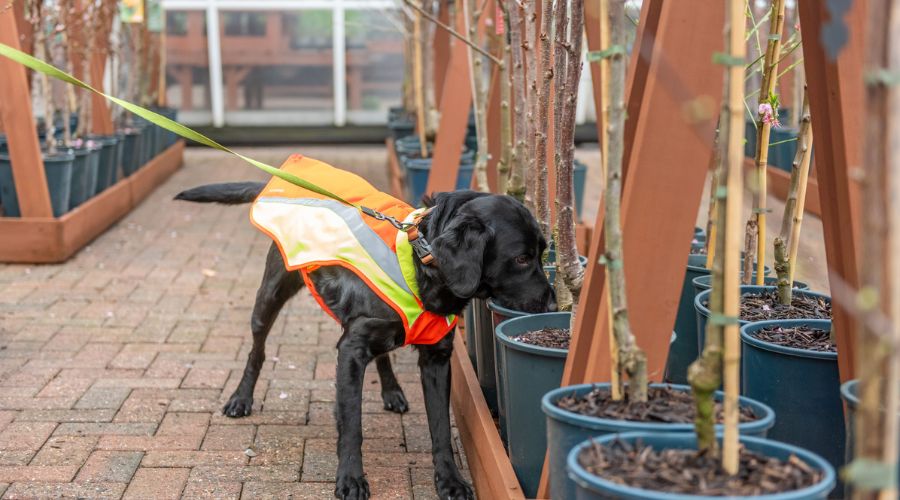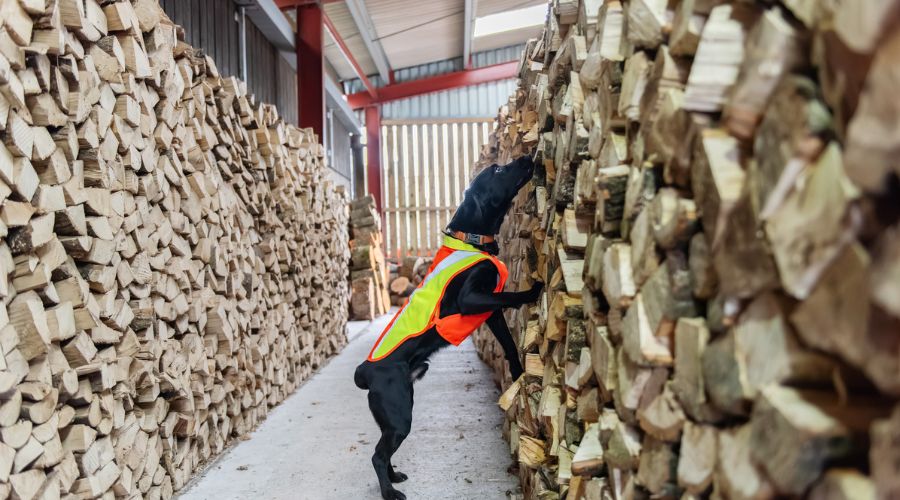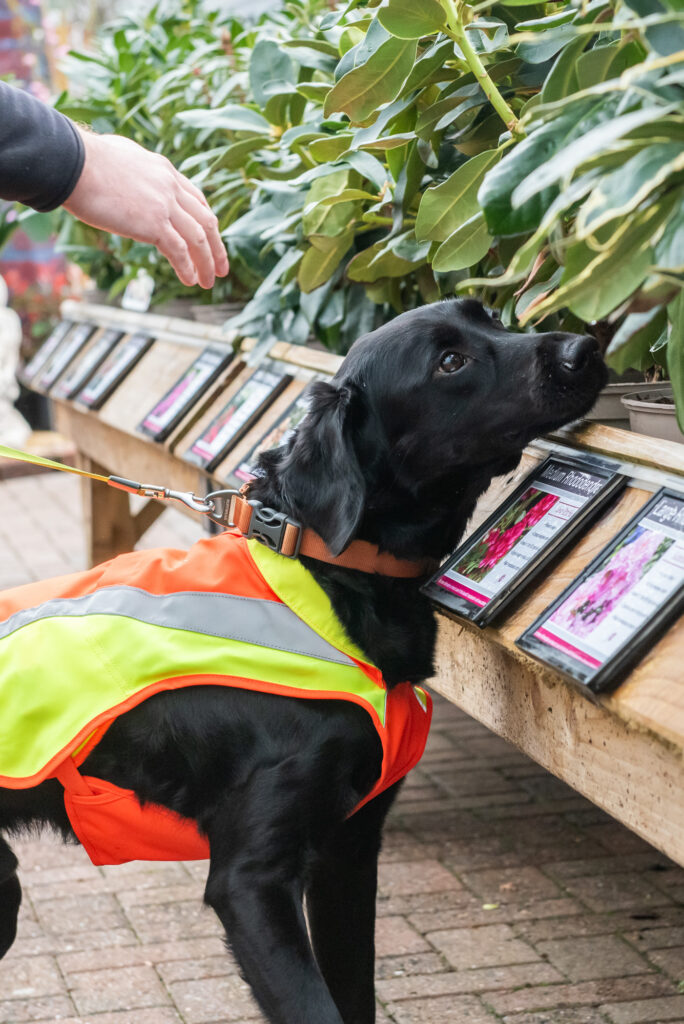Sniffer dog detects tree disease to help protect UK woodlands
30th November 2024
Detection dogs have been used in the UK for the first time to successfully identify tree disease, helping track down the deadly tree pathogen Phytophthora ramorum.

The collaboration of the UK’s Forest Research and Canine Assisted Pest Eradication has successfully trained Ivor, a six-year-old cocker spaniel x labrador, to identify the highly destructive pathogen.
This destructive organism can cause extensive damage and even death to more than 150 plant species, including significant mortality on larch, which are important timber trees.
Ivor was trained using a variety of detection training techniques, such as initial scent recognition. The first round saw Ivor successfully identify Phytophthora ramorum in soil, plant material and sterile distilled water.
Further training phases saw Ivor faced with a number of scenarios that helped reinforce his detection abilities by introducing new working environments.
Ivor was then able to build up to distinguishing Phytophthora ramorum from the scent of other Phytophthora species often found in the same environments to ensure effectiveness in real-world scenarios.
Groundbreaking research
The collaboration said that the damage to the trees, woods and forests from pests and diseases is significant, with the rapid increase in movements of goods and people between countries and climate change increasing the risk of spread in recent years, and this is the latest government innovation in the fight to protect our nation’s trees and woodlands.
The UK’s chief plant health officer, professor Nicola Spence, added: “This groundbreaking research using detection dogs to identify Phytophthora ramorum, alongside other innovative approaches to tackle pests and diseases, will play a key role in maintaining biosecurity to meet the vision set out in our world-leading Plant Biosecurity Strategy.
“Climate change and globalisation are increasing the number and the diversity of pests and diseases our nation’s trees and plants are exposed to. These new threats can cause significant damage, economic losses and, in many cases, tree death.

‘Incredibly encouraging’ results

Dr Heather Dun, forest research pathologist at the government’s Forest Research organisation, confirmed that the results from the trials have been “incredibly encouraging,” with a first-time 89% detection rate highlighting the huge potential of dogs in our fight against pests and diseases.
“Biosecurity is incredibly important, and detection dogs like Ivor are an exciting new method for helping to protect our trees,” she concluded.
Detection dogs have previously been used to tackle the outbreak of the Asian longhorn beetle pest in Paddock Wood, Kent, in 2012, where a team of dogs from the Austrian Plant Health Inspectorate successfully helped to detect the beetle.
Following the success of the initial trials, Forest Research is now exploring the use of detection dogs to help combat other pests and diseases such as Ips typographus, also known as the eight-toothed spruce bark beetle, fulfilling commitments set out in the GB Plant Biosecurity Strategy.
Read more rural news.
